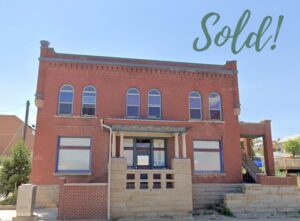An Exploration of Valuation Methods to Determine Commercial Property Value
INTRODUCTION
To determine commercial property value, it’s really more of an art than a science. An experienced commercial broker knows how to combine market knowledge and data with the appropriate valuation method to develop a commercial property valuation for the current market. The following discussion will outline the four main methods for commercial real estate valuation. These methods can be used to develop a baseline for understanding the value of your commercial property.
THE SALES COMPARISON APPROACH
The sales comparison approach, or the market approach relies on using comps and relevant sales data to determine commercial property value. The main challenge with this technique, is an absence of similar comp data for certain markets or locations. Because demographics, leasing trends, infrastructure, and other variables play a role in property value, comparing an office building in Denver, to an office building in Pueblo is not an apples to apples comparison. When there are good sales comps, these recently sold properties can provide an accurate valuation of a commercial value for any asset type.
THE COST APPROACH
The cost approach quite literally looks at the foundation and core of the building to identify the cost of rebuilding the property from scratch. This method is based on the idea that a buyer is willing to pay for a product, no more than the cost of re-producing a similar product with the same utility level. This method takes into account the present cost of land, construction materials, labor costs, and all other factors that are necessary to replace the commercial property’s existing structure.

The cost approach uses the following formula, “Property Value = Land Value + (Cost to Build New – Accumulated Depreciation). Using the cost approach method is uncommon, but can be a useful tool in markets with low activity, where there is limited data to use other methods.
THE INCOME APPROACH
The income approach is the most common technique for determining commercial property value and is based on the amount of income the property is expected to generate in the future. To better understand this method, let’s first define net operating income and capitalization rate.
Net operating income (NOI) is the net income generated by a property, less the operating expenses but before capital expenditures, debt service and taxes, i.e. “NOI = Effective Gross Income – Operating Expenses.” The capitalization rate (cap rate) is a ratio of net operating income to a property’s value and is used to express an owner’s anticipated return on investment over the course of a year before factoring in capital costs, debt service, and taxes or “Cap Rate = NOI / Value.” To use the income approach to identify commercial value, the appraiser will need access to a proforma that shows stabilized NOI calculated.
Once the NOI is established, a standardized cap rate is assigned to the equation – more active markets can expect a cap rate of 3-4% while less active markets may be 6-8%. The income approach can be a highly accurate method, as long as the NOI proforma which takes into account vacancy rates, and rent is accurate.
THE GROSS RENT MULTIPLIER APPROACH
The gross rent multiplier method is often described as the simplest approach and identifies the property value by multiplying the annual gross rents by the gross rent multiplier. The gross rent multiplier (GRM) is the ratio of the price of a commercial real estate investment to its annual rental income before accounting for expenses such as property taxes, insurance, and utilities. The GRM can also be described as the number of years the property would take to pay for itself in gross received rent. This method’s formula is “Property Value = Annual Gross Rents x Gross Rent Multiplier.”
PERFORMING VALUATIONS
The above four methods can all provide a foundation for understanding how to determine commercial property value, but they do not take into account the industry understanding and local market expertise a professional commercial broker can provide in determining the value of your commercial property, especially if you’re preparing for a sale.
If you’re ready to cash out on your commercial property, Transworld Commercial Real Estate brokers have a host of knowledge and a holistic suite of services to provide you with the strategic advice to get your commercial space sold.
PHIL KUBAT is the Principal & Managing Broker of Transworld Commercial Real Estate, a Colorado commercial real estate firm. Transworld Commercial Real Estate will serve as a strategic partner to clients for commercial real estate acquisitions and dispositions. Phil’s services include real estate advisory, site selection, strategic planning, incentive negotiations, development consulting, and financial analysis. In his spare time Phil enjoys hiking, skiing, golfing, and living life to the fullest! For more information on Transworld Commercial Real Estate, visit transworldcre.com.


